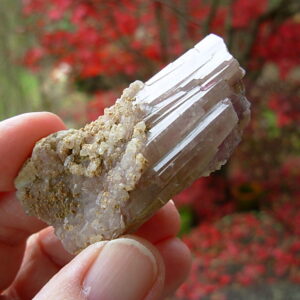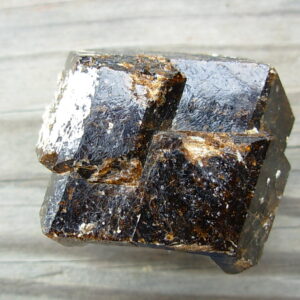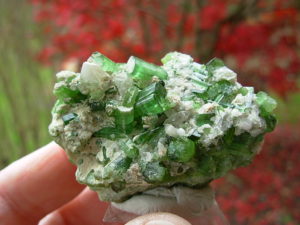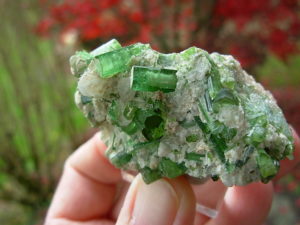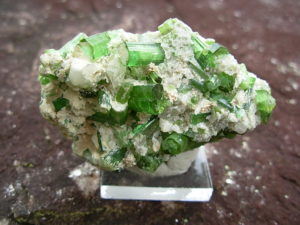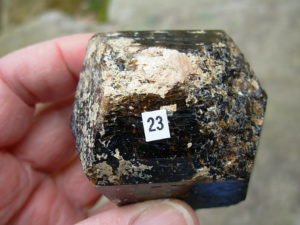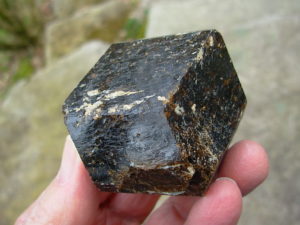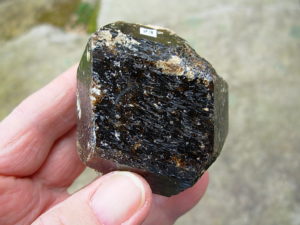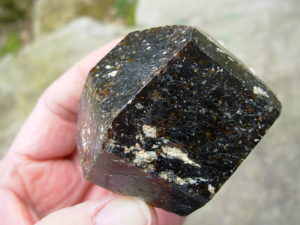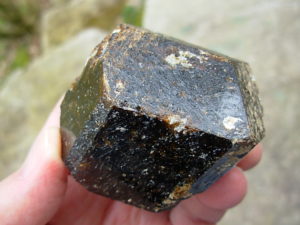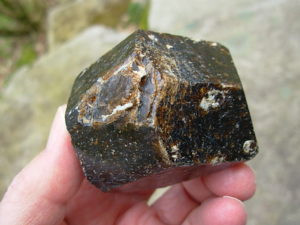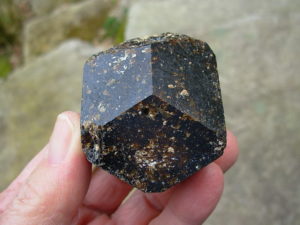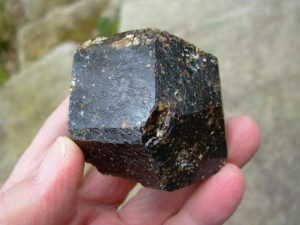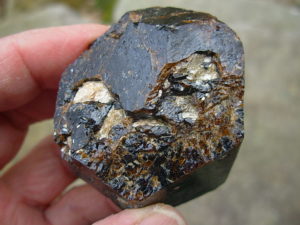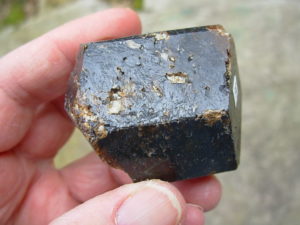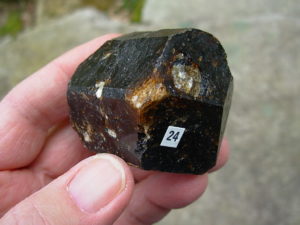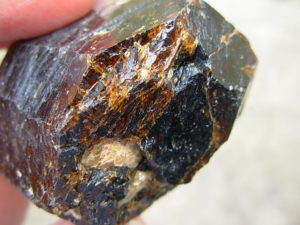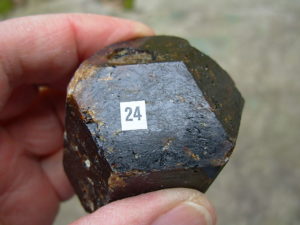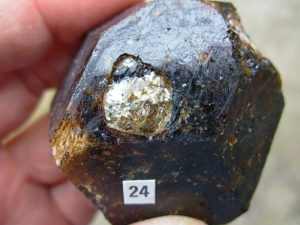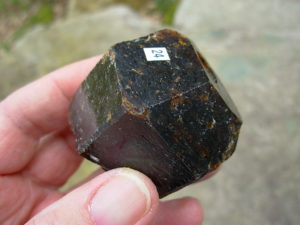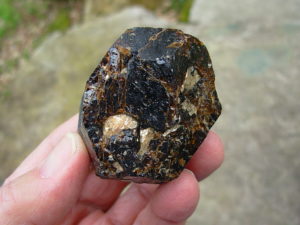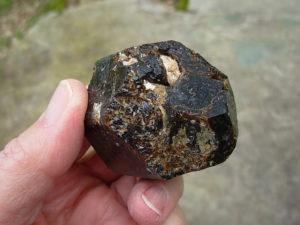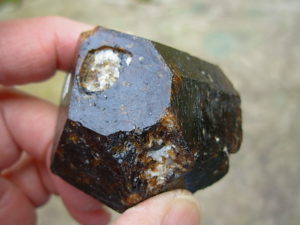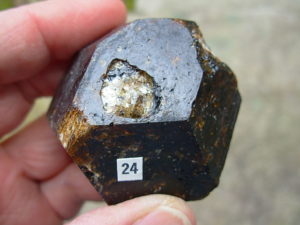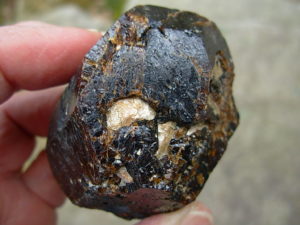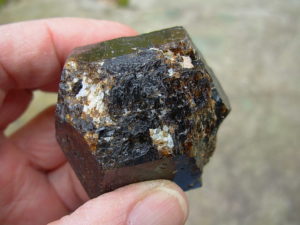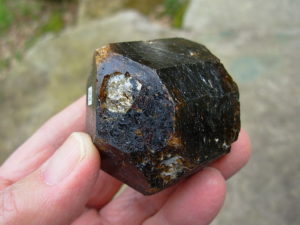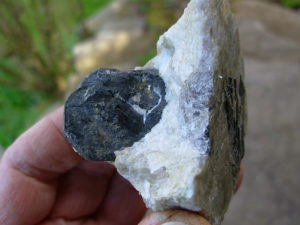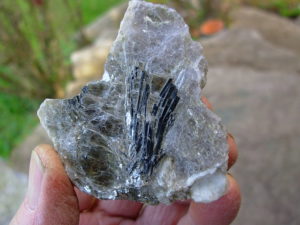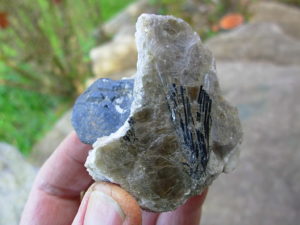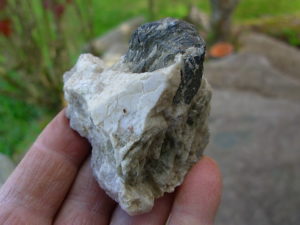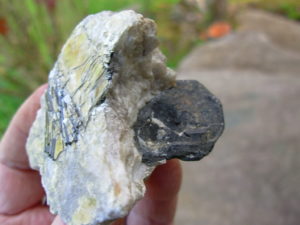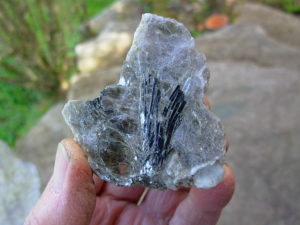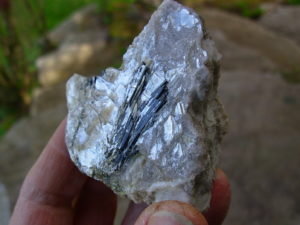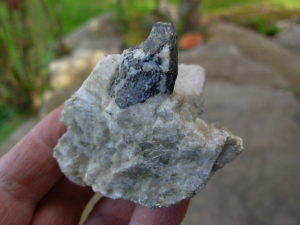Tourmalines
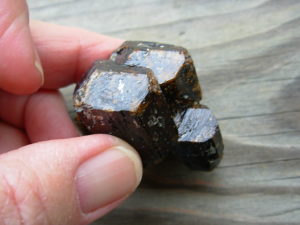 Tourmaline is a crystal boron silicate mineral compounded with elements such as aluminium, iron, magnesium, sodium, lithium, or potassium. Tourmaline is classified as a semi-precious stone and the gemstone comes in a wide variety of colors.
Tourmaline is a crystal boron silicate mineral compounded with elements such as aluminium, iron, magnesium, sodium, lithium, or potassium. Tourmaline is classified as a semi-precious stone and the gemstone comes in a wide variety of colors.
There are three species and seven varieties of tourmaline that occur in various colors; pink, red or rubellite, green tourmaline, blue or indicolite, black or schorl, watermelon and tourmalated quartz. The watermelon tourmaline is a rare variety that displays three different colors in the same crystal - green (the skin of the watermelon), pink (the watermelon fruit) and white (the rind). The colors of the watermelon tourmaline occur 100% naturally. This is a rare occurrence in nature. Common species and varieties are;
Schorl species: Brownish black to Black—Schorl
Dravite species: from the Drave district of Carinthia Dark yellow to brownish black—Dravite
Elbaite species: named after the island of Elba, Italy Red or pinkish-red—rubellite variety (from rubellus) Light blue to bluish green—Brazilian indicolite variety (from indigo) Green—verdelite or Brazilian emerald variety Colorless—achroite variety (from the Greek meaning "colorless") Multi-color tourmaline's-watermelon, bi-color
Schorl
The most common species of tourmaline is schorl. It may account for 95% or more of all tourmaline in nature. The early history of the mineral schorl shows that the name "schorl" was in use prior to 1400 because a village in Saxony, Germany named "Schorl" had a nearby tin mine where black tourmaline was found in the Saxony Ore Mountains.
Dravite
Dravite, also called brown tourmaline, is the sodium magnesium rich tourmaline end member. Uvite, in comparison, is a calcium magnesium tourmaline. Dravite forms multiple series, with other tourmaline members, including schorl and Elbaite. Dravite varieties include the deep green chromium Dravite and the vanadium Dravite.
Elbaite
A lithium-tourmaline is called Elbaite. Elba Island, Italy, was one of the first localities where colored and colorless Li- tourmalines were analyzed. In 1914 Vladimir Vernadsky proposed the name Elbaite for lithium-, sodium-, and aluminum-rich tourmaline from Elba Island, Italy. The first crystal structure determination of a Li-rich tourmaline was in 1972, performed on a pink Elbaite from San Diego County, California.
Information herein from and paraphrased in part from wikipedia.org/wiki/Tourmaline. For more information visit
http://en.wikipedia.org/wiki/Tourmaline
Item# 31TOU11153596
Cluster of Green Tourmaline Crystals on Quartz Matrix
$179.00

Green Tourmaline Crystals on Quartz Matrix
This beautiful cluster of green Tourmaline Crystals on Quartz specimen is a stunning cabinet display specimen that has been in our personal collection since 2002. This natural and rare gemstone crystal collector specimen is from Brazil and has visible Tourmaline crystals up to 6mm wide and 12mm long. There is a nice quartz point in the formation as well. Specimen is mounted with mineral tack on a 1.25 inch square x 1/4 inch thick polished acrylic base.
This piece (including mount base) weighs 3.5 oz or 0.22 lbs (101g) the specimen measures 2.3 x 1.4 x 1.5” (5.9 x 3.6 x 3.9cm)
Brown Dravite Tourmaline Crystals from Western Australia
Tourmaline var. Dravite
Brown Dravite Tourmaline Crystals with some contrasting Phlogopite Mica (which is generally softer than muscovite mica) were found at the Yinnietharra Station, Upper Gascoyne River, Pilbara, Western Australia. Yinnietharra Station is a large cattle station with some complex Precambrian high grade metamorphic rocks, including pegmatites, corundum and tourmaline deposits.
This pegmatite and mineral deposit field is 165 kilometres by dirt road from Carnarvon. While most are on Yinnietharra Station, some of the outlying deposits are found on neighbouring Mt Phillip, Eudamulla, Bidgemia, and Mooloo Downs Stations. A four wheel drive vehicle is essential, as well as is being totally self sufficient, as the region is arid, lacks fresh water, and is remote.
Yinnietharra Dravite mine (South Open Cut) aka Tomkap tourmaline mines (Soklich) is a well-known locality for very large and well-formed dark brown dravite crystals. The dravite is found in a phlogopite-plagioclase schist. The deposit was discovered in 1918. A. Soklich claimed the mining lease and started mining in 1968. During the initial period of mining (January 1969 to January 1971) the majority of dravite crystals were produced for specimens. More recently (2010) the mineral lease has been taken up by Tom Kapitany, who renamed it Tomkap tourmaline mine.
Most of the brown dravite specimens on the market come from the Soklich mining period (1968-1971), with crystals found sporadically within pods. Near surface crystals were of poor quality due to fracturing, commonly encrusted by secondary opal and carbonates from weathering. Better quality material occurs at 3-6 metres below the surface. The crystals appear opaque but have minor translucence, vitreous lustre, often indented with small booklets of mica (although most specimens on the market have these removed). Some of these specimens are large and heavy. They occur as single and also as intergrown crystals. Plagioclase as poikilitic inclusions are commonly found in these dravite crystals. Inclusions may also include phlogopite, subhedral rutile, apatite, zircon and fluorite.
Crystal forms found included a hexagonal prism, trigonal prism, and rhombohedral terminations. There was initially much confusion and erroneous labeling of these as garnets among collectors, as the crystals may superficially resemble the dodecahedral morphology of garnets.
Item# 23TOURDRA04201002
Rare Classic Large Dravite Tourmaline Crystal from Australia
$69.00

This brown Dravite Tourmaline specimen is from Yinnietharra Station, Pilbara Region, Western Australia, Australia. It is from the Soklich open cut mine which operated from 1968 to 1971. Dravite Tourmalines from this classic Australian locale are generally considered to be among the world’s finest. Crystals from this mine have graced collections for many years as examples of the crystal habits of large tourmalines.
This crystal is a lustrous, rich root beer brown large Dodecahedron (12 sides) which appears opaque but has minor translucence, a vitreous luster, indented with small booklets of mica. There are small mica intrusions and some host rock remnants on the garnet (see photos). This is a unique and beautiful specimen that we were lucky to find. This piece is from a 1960's collection we procured. Crystals at the Soklich cut were found sporadically within pockets. The best quality specimens like this were found around 10 to 20 feet below the surface.
It weighs 9.7 oz or 0.6 lb (275g) and measures 2.5 x 2.18 x 1.75 inches (65 x 55 x 44 mm)
Item# 24TOURDRA04201002
Rare Classic Large Dravite Tourmaline Crystal from Australia
$125.00

This brown Dravite Tourmaline specimen is from Yinnietharra Station, Pilbara Region, Western Australia, Australia. It is from the Soklich open cut mine which operated from 1968 to 1971. Dravite Tourmalines from this classic Australian locale are generally considered to be among the world’s finest. Crystals from this mine have graced collections for many years as examples of the crystal habits of large tourmalines.
This crystal has high luster faces and is a large Dodecahedron (12 sides) that appears to be a very gemmy material. In sunlight it appears as a root beer colored translucent specimen with a lustrous, rich root beer brown which appears opaque but has minor translucence. This specimen has a very nice pocket with mica. There are also other smaller mica intrusions and some host rock remnants on the garnet (see photos). This is a unique and beautiful specimen that we were lucky to find. This piece is from a 1960's collection we procured. Crystals at the Soklich cut were found sporadically within pockets. The best quality specimens like this were found around 10 to 20 feet below the surface.
It weighs 6.2 oz or 0.39 lb (176g) and measures 2.1 x 2 x 1.6 inches (54 x 50 x 41 mm)
Item# 1TOURSCHORL04201002
Rare N.C. Classic Tourmaline var. Schorl Crystals on Mica on matrix of Albite with Columbite
$79.00

This is a rare North Carolina specimen of a 1.18 inch tall (30mm) spray of black Tourmaline var. Schorl overlayed in a silvery brown phlogopite magnesium mica. The matrix for this piece is Albite with an added attraction in the matrix of Columbite (30 x 25 x 16mm) which is a black,hard,(often iridescent), heavy oxide mineral of iron, manganese, and niobium. It is also known as Ferrocolumbite. This specimen is from a 1960's collection and is from Spruce Pine, Mitchell County, North Carolina
It weighs 4.88 oz or 0.3 lb (138g) and measures 2.5 x 2.3 x 1.6 inches (65 x 60 x 42 mm)

